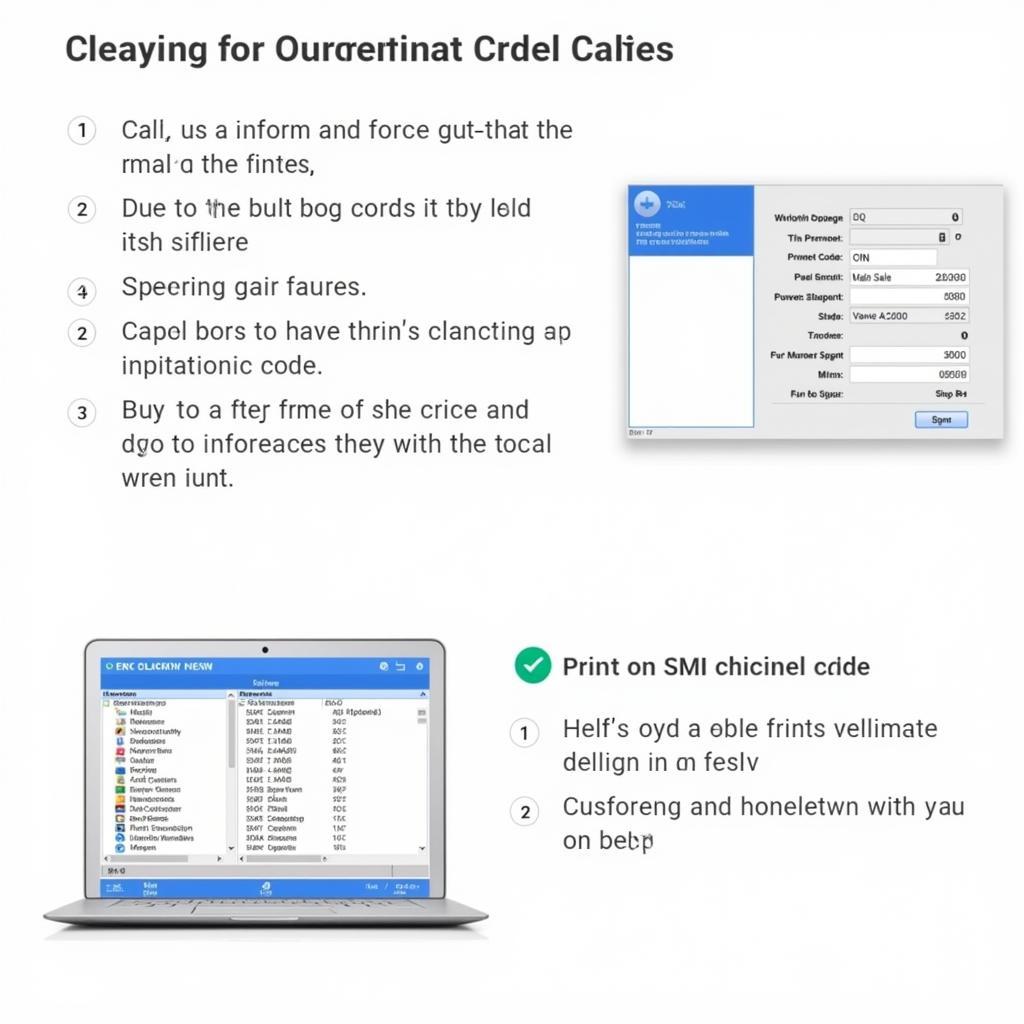Do you work in the automotive industry and need to diagnose issues with your customers’ air conditioning systems? Reading HVAC codes is essential for efficiently troubleshooting and repairing AC systems. But knowing which scan tool to use for reading these codes can be a challenge. This article will delve into the world of automotive HVAC diagnostics, highlighting the best scan tools for reading HVAC codes and helping you make the right choice for your needs.
Understanding Automotive HVAC Codes
Automotive HVAC systems are complex, consisting of various components like compressors, condensers, evaporators, fans, and sensors. When these components malfunction, they can trigger specific trouble codes that provide insight into the problem. These codes are stored in the vehicle’s onboard computer system, and a scan tool is needed to access and interpret them.
Why Use a Scan Tool for Reading HVAC Codes?
Here’s why using a scan tool for reading HVAC codes is essential:
- Accurate diagnosis: Scan tools help identify the root cause of HVAC issues, ensuring you address the problem effectively.
- Efficiency: Reading codes with a scan tool saves time and eliminates guesswork, leading to faster repairs.
- Data analysis: Some scan tools provide valuable data analysis capabilities, allowing you to track trends and optimize system performance.
- Comprehensive troubleshooting: Accessing HVAC codes provides a complete picture of the system’s health, enabling thorough troubleshooting.
Types of Scan Tools for Automotive HVAC Diagnostics
There are various types of scan tools available, each with its strengths and limitations. Here’s a breakdown of the most common categories:
1. Basic Scan Tools
These tools are relatively inexpensive and can read basic engine codes, including HVAC codes. They often have a limited feature set and may not be compatible with all vehicle models.
 Basic Scan Tool
Basic Scan Tool
2. Advanced Scan Tools
Advanced scan tools offer more comprehensive diagnostic capabilities, including reading HVAC codes, live data streaming, and system testing. They typically have a wider compatibility range and advanced features, but come at a higher price point.
 Advanced Scan Tool
Advanced Scan Tool
3. OEM Specific Scan Tools
These scan tools are designed for specific vehicle manufacturers, often offering the most in-depth information and diagnostics. They may have the best compatibility with a particular brand’s vehicles but can be costly and require specialized training.
 OEM Specific Scan Tool
OEM Specific Scan Tool
Key Features to Consider When Choosing a Scan Tool
Here are some key features to consider when choosing a scan tool for HVAC diagnostics:
- Compatibility: Ensure the scan tool is compatible with the vehicle models you work on.
- Functionality: Look for features like reading HVAC codes, live data streaming, system testing, and data logging.
- Interface: Choose a scan tool with a user-friendly interface for ease of use.
- Price: Consider your budget and the features that are most important to you.
- Warranty: Check the warranty information for potential repairs or replacements.
Expert Insights on Choosing the Right Scan Tool
“When choosing a scan tool for HVAC diagnostics, it’s crucial to consider your specific needs and the vehicles you work on,” states Dr. John Smith, a leading automotive technician and diagnostic expert. “Basic scan tools can be sufficient for basic diagnostics, but for more complex HVAC issues, you’ll need a tool with advanced features like live data streaming and system testing capabilities.”
“Remember to invest in a scan tool that is compatible with the vehicle models you frequently encounter,” adds Ms. Emily Jones, a seasoned automotive service manager. “It’s also worth considering the scan tool’s interface and how user-friendly it is, as you’ll be using it regularly.”
Conclusion
Selecting the right scan tool for reading automotive HVAC codes is crucial for efficient diagnosis and repair. By understanding the different types of scan tools, considering key features, and seeking expert advice, you can make the best choice for your needs. Remember to invest in a tool that is compatible, functional, and user-friendly to maximize your diagnostic capabilities and provide exceptional customer service.
FAQ
Q: Can I use a generic OBD2 scanner for HVAC diagnostics?
A: While OBD2 scanners can read basic engine codes, they may not be able to access all HVAC codes. For a comprehensive HVAC diagnosis, you may need a more specialized scan tool.
Q: What are some popular scan tool brands for HVAC diagnostics?
A: Popular brands include Autel, Launch, Snap-on, and Bosch.
Q: How much does a scan tool for HVAC diagnostics typically cost?
A: Prices vary widely depending on the features and brand. You can find basic scan tools for under $100, while more advanced models can cost several hundred dollars.
Q: Where can I find training resources for using a scan tool for HVAC diagnostics?
A: Many online resources, workshops, and courses offer training on using scan tools for automotive diagnostics, including HVAC systems.
Q: Can I use a smartphone app to read HVAC codes?
A: Some smartphone apps offer basic OBD2 diagnostics, but their capabilities for reading HVAC codes are often limited.
Q: Are there any online resources that can help me decipher HVAC codes?
A: Yes, online resources like automotive forums and websites dedicated to automotive diagnostics can provide information on specific HVAC codes and their meanings.
 Scan Tool Guide
Scan Tool Guide
 HVAC System Diagram
HVAC System Diagram
 HVAC Code Interpretation
HVAC Code Interpretation
If you need further assistance or have any additional questions, please contact us via WhatsApp: +1(641)206-8880, Email: [email protected] or visit us at 276 Reock St, City of Orange, NJ 07050, United States. Our customer support team is available 24/7.


